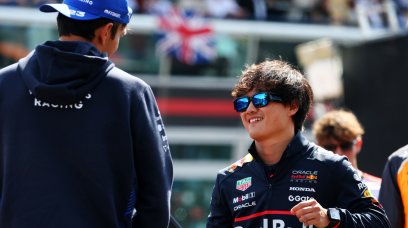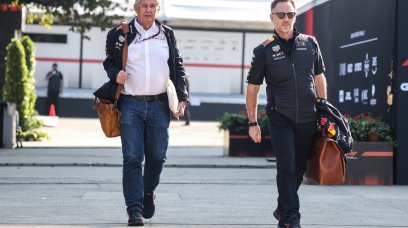The FIA is to limit the amount of power F1 cars are able to generate with the 2026 regulations, in a series of strict safety rules, it has been reported.
For 2026, the electrical systems on the cars are to be beefed up to 350kw of energy, almost tripling from 120kw in 2025, capable of producing around 475 brake horsepower.
When this is combined with the power generated by the internal combustion engine of around 540-580 bhp, at full power, cars could be producing well over 1,000 bhp.
Mercedes boss Toto Wolff recently stated that he believed cars could reach up to 400kph (248mph), with 2026-spec cars exiting the Monaco tunnel predicted to be at around 350kph (217mph).
It has been reported by Auto Motor und Sport that each of the 11 teams on the grid next season has been made aware of a chart showing how much of each track could theoretically be driven at full throttle.
But for two grands prix, Monaco and Singapore, the FIA is set to introduce reduced power modes to keep speeds under control.
Reportedly known as 'Rev1 mode', reduced power will be available to drivers, in both standard and override mode. At each of the remaining circuits, full power will be available to drivers to use as they please.
The article continues below.
Charging rates
The reported rules package by AMUS does not end there, with limits also being placed on the amount of energy able to be stored in the battery per round.
For 12 of the 24 tracks, a total of 9 megajoules of energy is able to be captured throughout practice, in qualifying and then in override mode, with the standard race package being 8.5MJ.
This includes venues such as Spa, Suzuka, Miami and the new Madrid track.
A sliding scale of energy available then follows, depending on how fast the track is, with Jeddah reduced to 8.5MJ throughout practice, 6.5MJ in qualifying and then 8.0MJ in the race.
For Monza, this is reported to fall even further to 6.0MJ for qualifying.
In a further rule tweak, AMUS reports that on ultra-fast tracks such as Melbourne, Jeddah, Silverstone, Spa, Monza, Baku, and Las Vegas, the reduction in combustion engine power will be halved to 50kW from 100kW to reduce the possibility of a car suddenly becoming slow on a main straight.
Elsewhere, override mode is only set to be permitted in one place per lap, akin to DRS, which is effectively eliminated due to the introduction of active aerodynamics, which will change the shape of the rear wing to reduce drag, but these 'override mode zones' do not exactly correspond to current DRS zones.
Also interesting:
Join RacingNews365's Ian Parkes and Nick Golding, as they look ahead to F1's return from the summer break at the Dutch Grand Prix. The wet weather risk for both McLaren drivers at Zandvoort is discussed, as is how Lewis Hamilton will approach media day.
Rather watch the podcast? Then click here!
Don't miss out on any of the Formula 1 action thanks to this handy 2026 F1 calendar that can be easily loaded into your smartphone or PC.
Download the calenderMost read










Join the conversation!